Panorama P1, P4 and P6 provide deep DAW integration for Presonus Studio One: Navigate your projects, control virtual instruments like hardware synths, mix your tracks using Panorama’s faders – and take over any selected parameter for instant control from the motor fader. All of that with full parameter feedback on the display. Time to get hands on with Studio One!
TRANSPORT
Navigate your projects in Studio One directly from Panorama: Control all transport functions including record modes, switch tracks, undo, set locators or zoom Studio One’s window.
INSTRUMENTS
Use virtual instruments like hardware synthesizers: Access filters, envelopes and more. All internal instruments are pre-mapped and you can instantly access any selected parameter from the “Data” encoder.
MIXING
Bring that console feeling to your mixes: Turn Panorama P1, P4 and P6 into a mix surface for Studio One with detailed level, pan, sends, inserts and automation control.
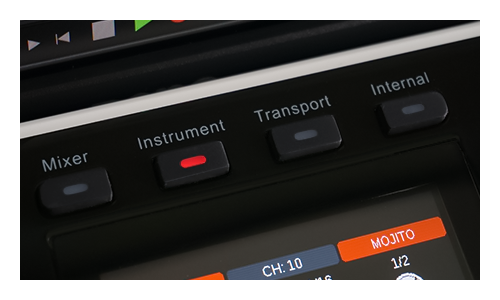
MODES OF STUDIO ONE
The mode buttons assign Panorama’s hardware controls to take over the right controls in Studio One: When you press “Mixer”, “Instrument” or “Transport”, Panorama’s control assignments are completely re-configured and the display is updated accordingly: The channel name is displayed for the currently selected track along with the selected menu, so it’s easy to get around without getting lost.
If you are also using our plugin host Nektarine, additional control options will become available on Panorama’s soft-buttons in the display. Nektarine can be used in conjunction with Studio One DAW integration and provides even deeper plugin control, graphic map editing and a powerful generic patch data base. “Internal” provides access to internal MIDI presets and general settings.
MIXER MODE
Mix multiple channels at once like on a hardware console using Panorama’s nine 45 mm faders – and the motor fader on P4/P6: With level control under your fingertips, mixing “in the box” becomes much more intuitive. You can control Studio One’s mixer channels in banks of 8 channels (using the Bank-/Bank+ buttons below the display). The LED buttons below the faders control solo, mute, record enable and direct track selection. Fader 9 controls the Master Level.
The 8 encoders above the fader section provide access to panning or one of the 8 sends by pressing the Toggle/View button.
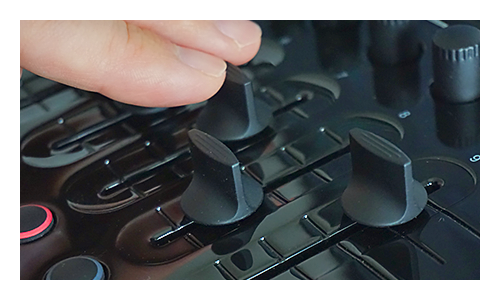
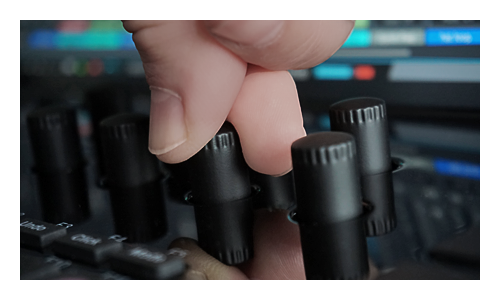
As you control different parameters in Studio One using the same fader controls, a fader’s physical position can be at a different value position than the parameter you are controlling. Panorama’s Soft Take-Over function ensures that fader settings don’t “jump”: Move a fader first to “”catch” the set value, only once level and position match it takes over. The display indicates what direction you need to move in. Should you prefer instant Take-Over instead, it’s just one click to deactivate the function.
The 8 encoders to the right of the display control sends, inserts and macros for a selected channel. By default, the encoders are assigned to a channel‘s first 8 sends, but by pressing display soft buttons you can instantly switch them to control channel inserts or Studio One’s macro parameters and engage mix automation.
The 100mm motor fader on P4 and P6 is always assigned to the currently selected channel for instant access – no matter what fader bank you have selected. “Mute” and “Solo” buttons along with “Read” and “Write” automation status LEDs add to the channel strip feel.
Pressing the “Fader” button assigns the motor fader to control the selected parameter with the fader instantly updating its position the current value for immediate feedback and control.
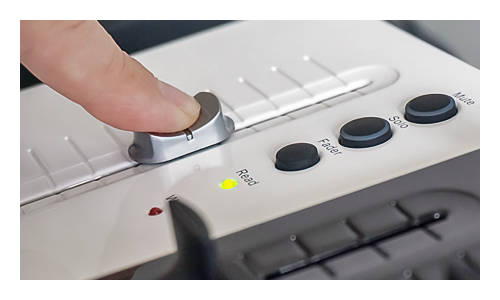
ALWAYS STAY IN THE PICTURE!
Parameter changes are visible on Panorama’s display. So no matter if you want to get an overview of your current bank of channels and its levels, see channel macro or sends assignments and their exact values – it’s all there, right in front of you!
Pressing the “Inserts” soft button in the display, will even give you access to your channel inserts and let you edit Studio One plugin settings right there.
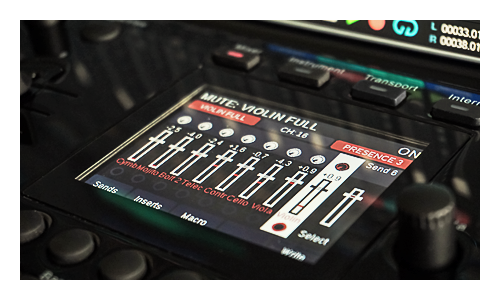
INSTRUMENT MODE
Control Studio One’s instruments and any VST®, VST3® or AU™ plugin from Panorama: In Instrument mode, all Studio One instruments such as Impact XT, Mojito, MaiTai, Sample One XT or Presence XT are pre-mapped for instant use.
Envelopes, filter control and other important instrument parameters are assigned to Panorama’s controls. Maps can be easily tweaked by activating the “Learn” function from the hardware and even preset browsing is supported via Panorama’s dedicated “Patch -/+” buttons for internal instruments and plugins that use Studio One’s patch manager.
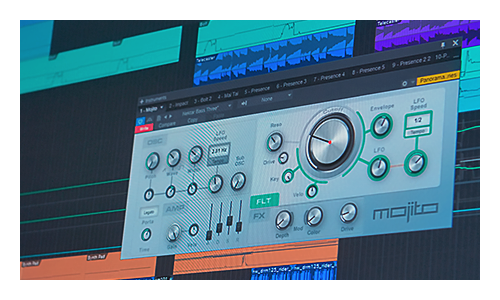
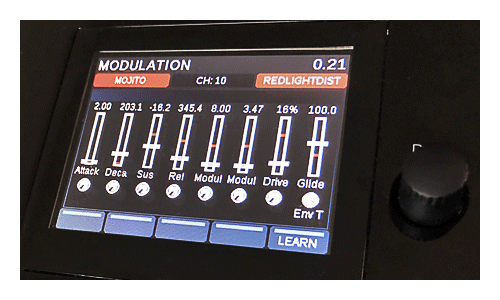
Parameter assignments for the 8 encoders are shown in the main part of the display. Moving any assigned control will update the top of the display. You have one page of parameters that can be freely mapped using “Learn”.
The first 8 faders are typically assigned to control envelopes. Fader 9 controls master volume. Press Toggle/View to view their assignments – and press one more time to view the encoder assignments again.
If you want even deeper control for your 3rd party VST, VST3 or AU instrument plugins, simply run Nektarine alongside Nektar DAW integration: Then you can control it all and build maps as deep as you like!
INSTANT CONTROL OF ANY PARAMETER
How about being able to instantly take over THIS parameter or THAT ONE? Yeah, the ones you are looking at in Studio One right now. Of course they are not assigned where YOU need them – which is stopping the flow.
With the selected parameter control you can now do assignments in realtime: simply click on any parameter in Studio One and it’s available on Panorama’s Data Encoder next to the display!
Each time you click a parameter with the mouse, it is assigned to the Data Encoder (for Studio One internal controls such as the console, built-in instruments or FX you can even activate mouse-over). This assignment works regardless of the mode you are in (Mixer or Instrument), and across multiple windows: So you could be controlling a mixer level one second, a VST plugin’s Decay time next – and finish off on a different channel’s panning.
If you have a P4 or P6, you can also assign the motor fader to control the selected parameter. Simply press the “Fader” button and you can use the motor fader for selected parameter control, too – with its position automatically moving to the currently set parameter value. So you can pick it up right away!
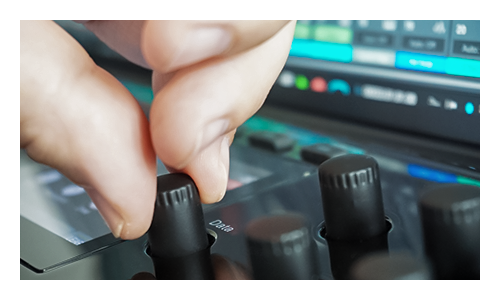
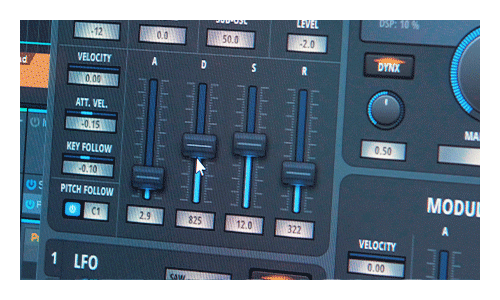
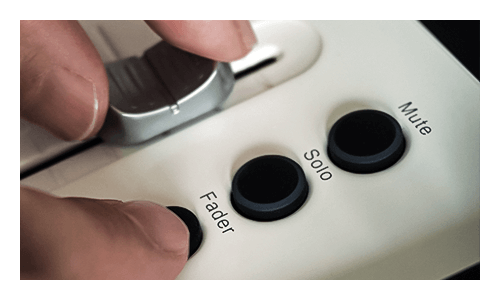
GLOBAL CONTROLS & NAVIGATION
Panorama’s dedicated transport and track selection buttons let you navigate your projects from the hardware:
• The 6 LED transport buttons give direct access to Studio One transport functions, no matter which mode has been selected. All standard transport functions such as Cycle, Rewind, Forward, Stop, Play and Record are available.
• A second row above the transport buttons gives you direct access to functions for Goto L, set Left or Right Loop Points to the current song position, Undo, Click on/off and to switch Replace Record Mode on/off.
• The “Track -/+” navigation buttons below the display let you change tracks (or mixer channels, depending on the mode), “Patch -/+” browses patches for Studio One internal instruments and instruments that save their patches inside Studio One, “View” toggles the visibility of all floating windows.
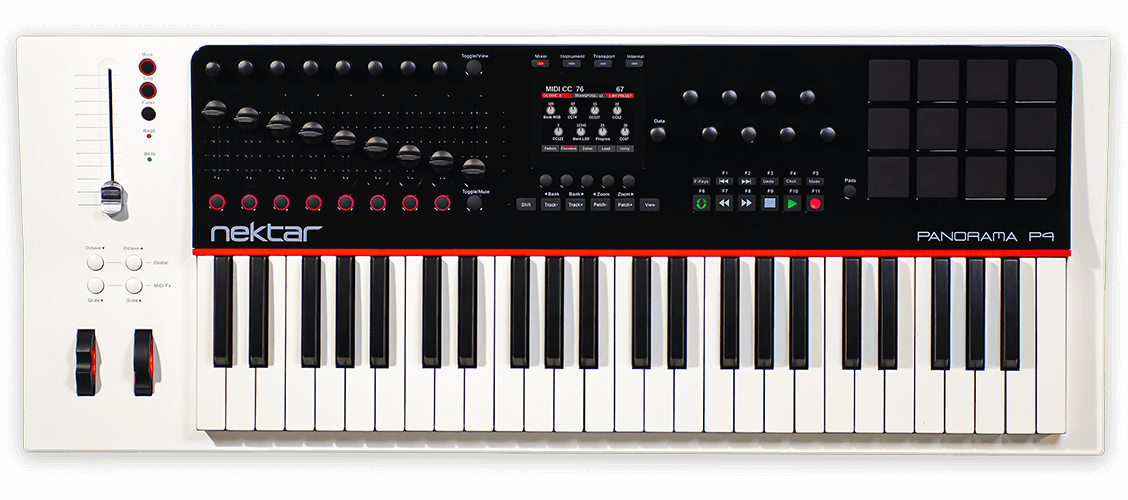

CONTROL MAPS
You can even control plugins that are not yet factory mapped for Nektarine: Simply click Nektarine’s “Edit” button to open the control edit page, this is where control map pages are created. You can also rename parameters and create navigation assignments so it’s easy to select the plugin’s pages. Drag and drop parameters to assign them to controls on each page or use Panorama’s parameter learn function.
Factory maps are also customizable and any map can be saved for automatic recall every time the plugin is loaded.
Panorama in combination with Nektar DAW integration for Studio One and Nektarine delivers an unrivaled control experience with deep integration typically not even available on dedicated hardware synthesizer products. With this level of control you’ll see your software instruments in a new light.
BROWSE MEANS LESS
Nektarine’s browser enables browsing of patches directly from Panorama. Factory patches for most of the popular instrument plugins are instantly available with minimum setup.
Your own user patches can also be imported or saved, so over time there will be quite a few patches to choose from in the Nektarine browser. Thankfully, Nektarine has all the tools to help you manage thousands of patches – including patch tagging, search and rating options which make it easy to find exactly the patch you are looking for.
Group tags store a combination of tag settings and make it possible to narrow your options at the push of just one button.
The best part is that Nektarine maps and patches are not tied to just one DAW: Once you’ve built your maps and patch library in Nektarine, they are instantly available in any VST or AU host application: Use Nektarine in one DAW and your plugins can be browsed and controlled the same way in any other compatible DAW.
NEKTARINE PLUGIN HOST
Nektarine is included with your Nektar software download and can be run alongside Studio One DAW integration. It provides a powerhouse of features that enhance control and library management of instrument plugins.
Launch it like any other plugin and it will immediately communicate with your Panorama. Now you are ready to take deep control of VST, VST3 or AU plugins from Panorama: Load an instrument plugin that’s supported by Nektarine’s default plugin maps and create new and exciting sounds that you didn’t even know your plugin was capable of. The display will tell you which parameter is assigned to each control as well as status feedback.
Turn the “Data” encoder to bring up Panorama’s menu in the display for direct access to the different pages of an instrument map (such as OSC, Filter, Env, LFO or FX). This makes it quick and easy to find your way around even complex plugins. As soon as you select a page, the corresponding Nektarine factory map page is selected and the controls change their assignment accordingly.

MULTI MEANS MORE
Panorama’s “Multi” mode enables up to 16 instrument plugins to be layered in Nektarine. Each plugin slot has its own unique browser settings as well as volume, pan, mute and solo parameters assigned for instant mix from Panorama.
When Multi mode is active, patches loaded for each slot are clearly listed in the display and slots can be added in real-time. Press the Browse button at any time to load a new patch in any of the active slots. Multi definitely means more!

DAW INTEGRATION FEATURES
Transport Buttons
- Loop/Cycle on/off
- Rewind in steps of 1 bars
- Forward in steps of 1 bars
- Stop
- Play
- Record
- Set Left locator to current song position
- Set right locator to current song position
- Undo
- Metronome on/off
- Latch automation on/off
Navigation Buttons
- Channel change -/+ in Mixer mode
- Track change -/+ in Instrument mode
- Patch change -/+ for Studio One devices
- Bank change -/+
- View opens/closes all floating windows
- Zoom -/+ for horizontal zooming
Display
- Full parameter feedback,
3.5″ high resolution TFT color display
Display Soft Buttons
- Mixer mode: Sends, Inserts, Macro, Automation
- Instrument mode: Learn
- Transport Mode: Tap Tempo, Marker Ins/del, Automation
Transport Mode
- Large song and Locator position on display
- Encoders assigned to Tempo, Song Position Pointer, move set Loop range, Select marker
Instrument Mode
- Open/close instrument window
- Maps customizable by using Studio One Learn
- Faders 1-4 commonly mapped to amp envelope
- Faders 5-8 commonly mapped to filter envelope
- Motor fader controls instrument main volume*
- Take over any visible parameter from Data Encoder
Mixer Mode
- Open/Close Mixer view
- Control 8 channels at the same time
- Volume assigned to faders 1-8
- Pan, and sends 1-8 assignable to encoders in fader section
- Channel sends 1-8, Inserts 1-8 and Macro assignable to encoder section for each channel
- Solo, mute, Rec Arm and channel selection via fader buttons
- Bank over to control more channels (1-8 / 9-16 etc.)
- Current track volume, mute and solo controlled by motor fader*
- Master volume controlled by fader 9
- Soft Take-Over mode eliminates parameter value jumping
- Take over any visible parameter from Data Encoder
(*= only on Panorama P4 and P6. P1 has no motor fader)
System Requirements
- Panorama P1/P4/P6 MIDI controller
- Studio One version 4 or higher
- Windows 7, 8, 10 or higher, Mac OS 10.7 or higher
“VST” is a trademark of Steinberg Technologies GmbH, registered in Europe and other countries. “AU” and the Audio Units logo are trademarks of Apple Computer, Inc. All other product and company names are ™ or ® trademarks of their respective owners.
